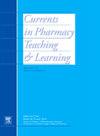A two-step training program for utilizing interpreters during patient interactions: Advancing student pharmacists communication skills
IF 1.4
Q3 EDUCATION, SCIENTIFIC DISCIPLINES
引用次数: 0
Abstract
Objective
To develop and evaluate the effectiveness of a two-step training pilot program in the Doctor of Pharmacy curriculum to prepare students to utilize medical language interpreters during patient interactions.
Methods
The Advanced Communications and Counseling Skills course was a two-step program developed to train professional year two (P2) student pharmacists to effectively utilize interpreters during patient encounters. Training included completion of virtual modules and in-person standardized patient encounters where the use of an interpreter was required to counsel. Students then demonstrated the communication skills acquired at a health fair for patients that spoke a language other than English. Student perspective, comfort, and confidence of using interpreter services were measured and compared pre and post program implementation. Patient satisfaction with P2 communication skills were also assessed.
Results
A total of 23 P2 students completed the program. Overall, summary statistics indicate trends for student improvement in all areas, with students' confidence in using an interpreter improved. All students were satisfied with the training modules (100.0 %) and the majority felt prepared in using an interpreter (94.4 %). Patients were very satisfied (76.5 %) or satisfied (23.5 %) with the students' ability to utilize an interpreter during the patient encounter at the health fair.
Conclusion
The Two-Step program provides students with training on how to utilize interpreters. Students are receptive to participating in the course and satisfied with the communication skills acquired. Embedding this course in the pharmacy curriculum could increase student confidence and have a positive impact on patient communication experience.
在病人互动中使用口译员的两步培训计划:提高学生药剂师的沟通技巧
目的制定并评估药剂学博士课程中两步培训试点计划的有效性,以培养学生在与患者互动时使用医学语言口译员。方法高级沟通和咨询技巧课程分为两步,旨在培训专业二年级(P2)学生药剂师在与患者接触时有效地利用口译员。培训包括完成虚拟模块和需要使用口译员进行咨询的面对面标准化病人接触。然后,学生们展示了他们在一个健康博览会上获得的沟通技巧,这些技巧是在说英语以外的语言的病人身上获得的。测量并比较了项目实施前后学生使用口译服务的视角、舒适度和信心。评估患者对P2沟通技巧的满意度。结果共有23名P2学员完成该项目。总的来说,总结统计数据表明学生在各个方面都有进步的趋势,学生使用口译员的信心有所提高。所有学生(100.0%)都对培训模块感到满意,大多数学生(94.4%)认为已经准备好使用口译员。患者非常满意(76.5%)或满意(23.5%)学生在健康博览会上与患者会面时使用口译员的能力。结论“两步法”课程为学生提供了如何使用口译员的培训。学生乐于参与课程,并对所获得的沟通技巧感到满意。将此课程纳入药学课程中,可以增加学生的自信心,并对患者沟通体验产生积极影响。
本文章由计算机程序翻译,如有差异,请以英文原文为准。
求助全文
约1分钟内获得全文
求助全文
来源期刊

Currents in Pharmacy Teaching and Learning
EDUCATION, SCIENTIFIC DISCIPLINES-
CiteScore
2.10
自引率
16.70%
发文量
192
 求助内容:
求助内容: 应助结果提醒方式:
应助结果提醒方式:


